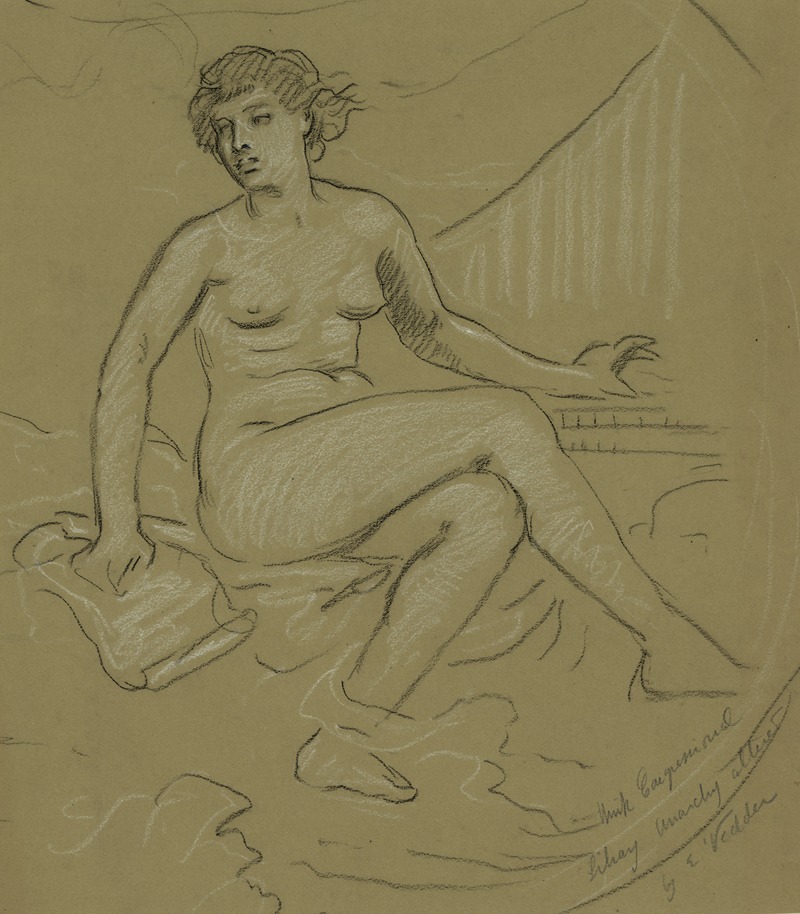
Anarchy
A hand-painted replica of Elihu Vedder’s masterpiece Anarchy, meticulously crafted by professional artists to capture the true essence of the original. Each piece is created with museum-quality canvas and rare mineral pigments, carefully painted by experienced artists with delicate brushstrokes and rich, layered colors to perfectly recreate the texture of the original artwork. Unlike machine-printed reproductions, this hand-painted version brings the painting to life, infused with the artist’s emotions and skill in every stroke. Whether for personal collection or home decoration, it instantly elevates the artistic atmosphere of any space.
Elihu Vedder's painting "Anarchy" is a notable work by the American symbolist painter, known for his mystical and allegorical style. Vedder, born in 1836, was an artist whose work often explored themes of chaos, destruction, and the human condition, reflecting the tumultuous times in which he lived. "Anarchy" is a prime example of his ability to convey complex ideas through symbolic imagery.
The painting was created during a period when Vedder was deeply engaged with the social and political upheavals of his time. The late 19th century was marked by significant social change, with movements advocating for workers' rights, political reform, and various forms of social justice gaining momentum. Vedder's work often mirrored these societal shifts, and "Anarchy" can be seen as a response to the instability and disorder that characterized the era.
In "Anarchy," Vedder employs a dramatic and somewhat foreboding composition to convey the concept of chaos. The painting features a central figure, often interpreted as a personification of anarchy itself, surrounded by symbols of destruction and disorder. The use of dark, swirling colors and dynamic forms creates a sense of movement and unrest, drawing the viewer into the tumultuous scene. Vedder's skillful use of light and shadow further enhances the painting's emotional impact, highlighting the contrast between order and chaos.
Vedder's interest in symbolism and allegory is evident in "Anarchy," as he uses visual metaphors to explore the theme of societal collapse. The painting can be seen as a commentary on the fragility of social structures and the potential for chaos to emerge when those structures are challenged or dismantled. This theme was particularly relevant during Vedder's lifetime, as the world was experiencing rapid industrialization, political revolutions, and shifts in social norms.
Elihu Vedder's work, including "Anarchy," was influenced by his travels and studies in Europe, particularly in Italy, where he spent a significant portion of his career. His exposure to classical art and Renaissance techniques informed his approach to painting, allowing him to blend traditional methods with contemporary themes. This fusion of old and new is evident in "Anarchy," where classical composition meets modern subject matter.
"Anarchy" is part of Vedder's broader body of work that often explores existential themes and the human psyche. His paintings frequently delve into the darker aspects of human experience, prompting viewers to reflect on the nature of existence and the forces that shape society. Vedder's ability to capture these complex ideas in visual form has earned him a lasting place in the history of American art.
Today, Elihu Vedder's "Anarchy" is appreciated not only for its artistic merit but also for its historical significance. The painting serves as a window into the concerns and anxieties of the 19th century, offering insight into the ways in which artists responded to the challenges of their time. As with many of Vedder's works, "Anarchy" continues to resonate with contemporary audiences, reminding us of the enduring relevance of art as a means of exploring and understanding the human condition.












